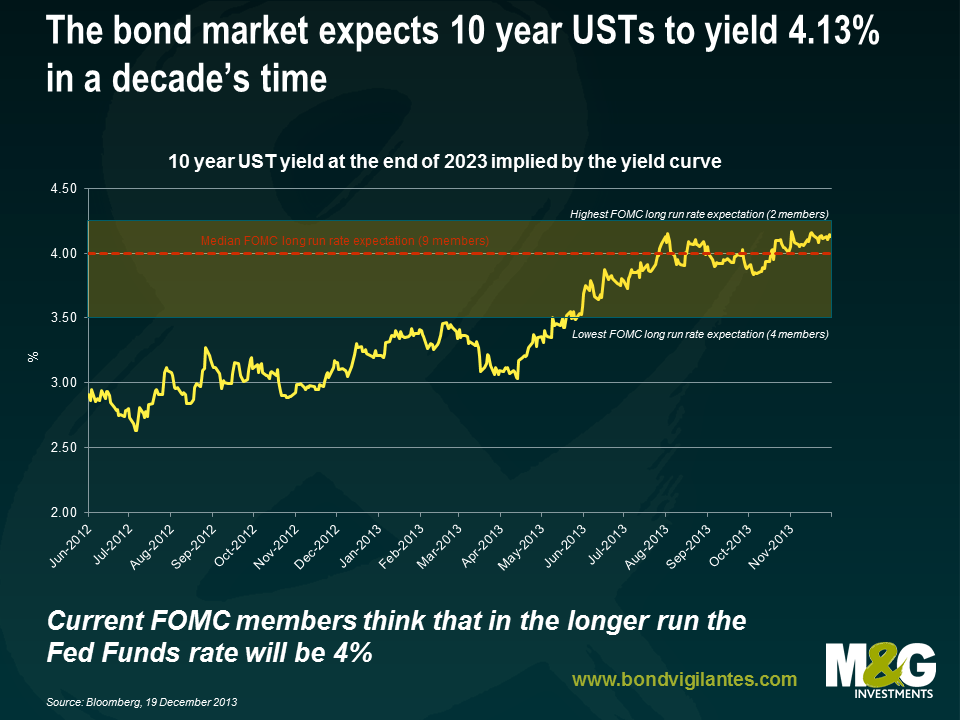US Treasuries – are we nearly there yet? Maybe we are.
Before we get all beared up about tapering, it’s worth seeing how far we’ve come already, and what the end game should be. The sell-off in US Treasury bonds has already been severe. 10 year yields have risen from a low of 1.4% in July 2012 to nearly 3% today. Most street strategists have yields rising further in 2014, with the consensus 10 year forecast at 3.37% for a year’s time.
But as well as looking at the spot yield, we should see what the yield curve implies for future yields. The chart below shows the 10 year 10 year forward rate – in other words the expected 10 year UST yield in a decade’s time backed out mathematically by looking at long dated UST yields today. You can see that the implied 10 year yield is now over 4%, at 4.13%.
The other thing I have put on the chart is a shaded band representing the range of expectations within the Federal Open Market Committee (FOMC) for the longer run Federal Funds rate. You can find this range of expectations here on the third slide of the charts from yesterday’s FOMC minutes. Four members think that that the long run Fed Funds rate is as low as 3.5%, and two think it is as high as 4.25%. The median expectation is 4%.
Now the 10 year bond yield is effectively the compounded sum of all short rates out to 10 years, plus or minus the term premium (which we will discuss in a minute). If the FOMC members are correct that 4% is the long run interest rate, then if the term premium is zero, the 10 year forward rate at 4.13% has already overshot where it needs to be, and we should be closing out our short duration positions in the US bond markets.
The term premium is important though (this blog from Simon Taylor is good at explaining what it is, and showing some estimates). The term premium is compensation for the uncertainty about the short rate forecast. Historically it has been positive, as you might expect, reflecting future inflation or downgrade risks. In recent years though it has been negligible, even negative – perhaps due to a non-price sensitive buyer in the market (the Fed through QE), but also perhaps due to deflation rather than inflation risk? It is likely however that the term premium rises at a turning points in rates – and also that if inflation ever made a sustained comeback, with central banks refusing to fight it, like in the pre-Volker years, the risk premium would rise strongly. We also know that markets tend to overshoot in both directions. Nevertheless, whilst it’s too soon to say that we’ve seen the highest yields of this cycle, as a value investor you could say that yields are moving towards fair value.
The value of investments will fluctuate, which will cause prices to fall as well as rise and you may not get back the original amount you invested. Past performance is not a guide to future performance.


17 years of comment
Discover historical blogs from our extensive archive with our Blast from the past feature. View the most popular blogs posted this month - 5, 10 or 15 years ago!


Bond Vigilantes
Get Bond Vigilantes updates straight to your inbox






